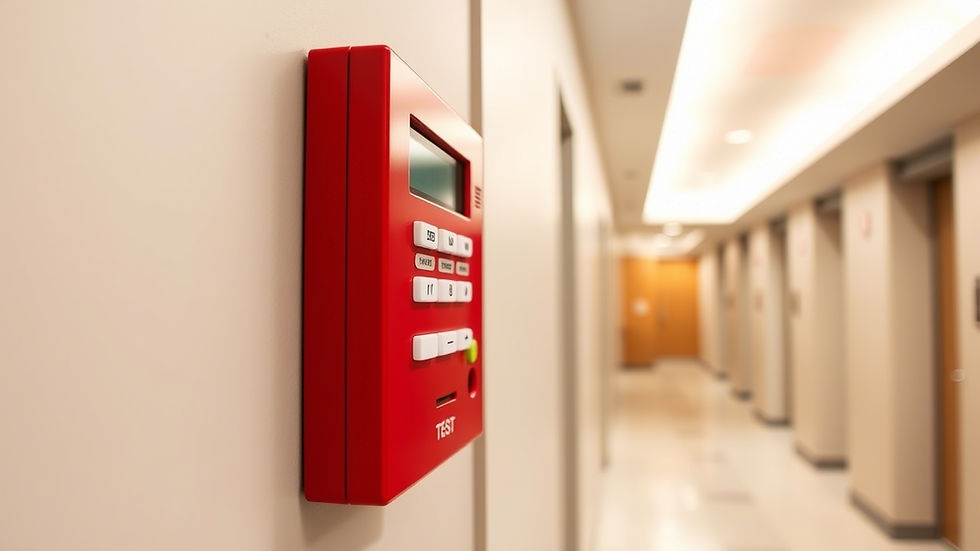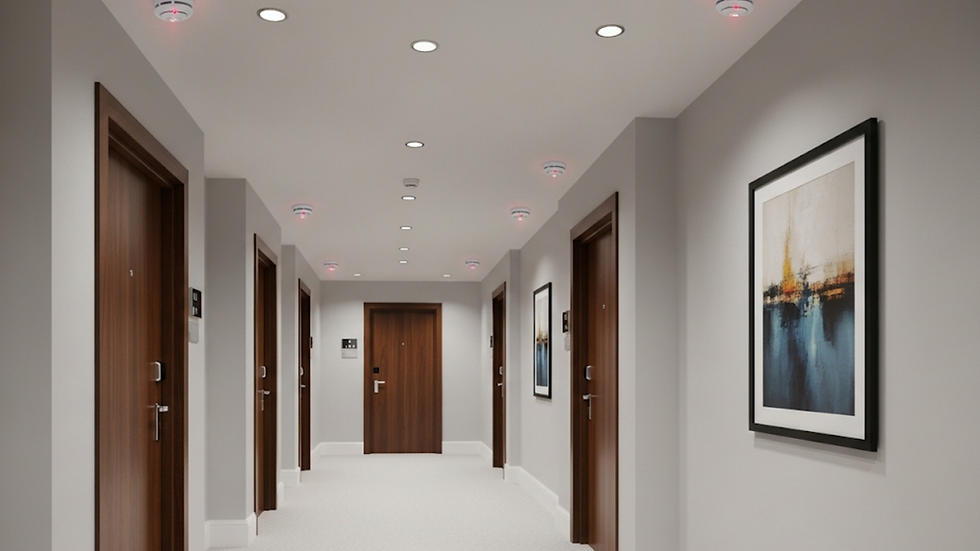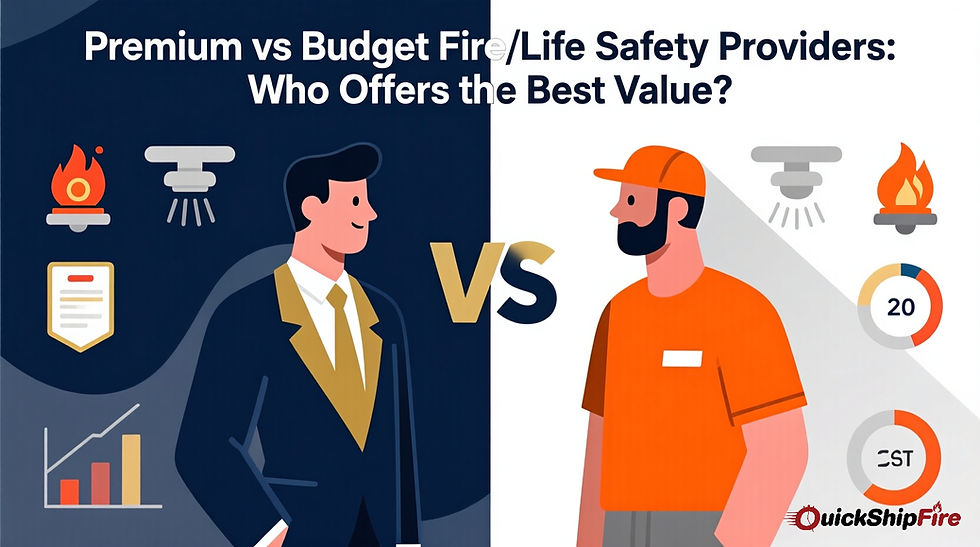Top Features to Look for in a Modern Fire Alarm Control Panel
- Quickship Fire
- Jul 29
- 4 min read
Introduction
A reliable Fire Alarm Control Panel is the heart of any well-run fire safety system. It serves as the brain for all fire detecting components in a building, receiving signals from a smoke detector, or heat detector, and activates the audible and visual alerting devices to evacuate people and protect property. But as you can imagine there are many different models of fire alarm systems, so what features actually classify as a modern fire alarm panel?
In the blog below we will unpack the different features that need to be included in a Fire Alarm Control Panel to be considered modern for 2023, regardless if you're installing a new fire alarm systems or upgrading a fire alarm panel or system.

What is a Fire Alarm Control Panel?
A Fire Alarm Control Panel (FACP) is a centralized system that monitors and controls the connected fire detection equipment. It receives input from smoke detectors, heat sensors, pull stations, and other devices and then activates audio/visual alarms, and in some cases, notifies emergency responders.
Whether you're working with a small commercial space or a multi-floor building, selecting the right Fire Alarm Control Panel is crucial for early warning and effective evacuation.
Key Features to Look For
1. Addressable Capabilities
Modern Fire Alarm Control Panels now often come with addressable systems. This means each device on the loop has a unique ID. So instead of just knowing there's a fire, you’ll know exactly where it is like "Room 205, Second Floor."
This speeds up emergency response and minimizes false alarm confusion.
2. Ease of Programming and Configuration
Gone are the days of complicated jumper switches and physical dials. Look for a control panel that offers:
Intuitive LCD or touchscreen display
USB or remote programming
Software updates via laptop or cloud
Systems like the FIRE-LITE ES-200X provide a user-friendly interface for technicians and facility managers alike.
3. Compatibility with a Wide Range of Devices
Not all panels support all detector types. Your Fire Alarm Control Panel should be compatible with:
Smoke and heat detectors
Manual pull stations
Notification appliances
Sprinkler monitoring systems
The flexibility ensures smoother integration and future expansion.
4. Advanced Event Logging and History Tracking
A solid modern panel will log all activity including alerts, trouble signals, resets, and silences. These logs are critical for inspections, insurance claims, and system audits.
Some panels store thousands of events with timestamps super helpful when something goes wrong.
5. Battery Backup and Power Supervision
In emergencies, the power might go out before anything else. A smart Fire Alarm Control Panel will include battery backups (typically 24-72 hours) and monitor its own power sources for faults.
Make sure the panel complies with standards like NFPA 72.
Smart Features That Add More Value
Remote Monitoring and Notifications
Some panels can send immediate notifications through email, SMS, or push notifications to building personnel or service companies. This kind of remote access is very useful especially in terms of safety.
Custom Zoning and Mapping
Having the ability to segment your building into zones is especially useful in large layouts. You can assign detectors to custom zones to let response teams know where to go - no uncertainty.
Voice Evacuation Support
Some more sophisticated systems also have a integrated voice evacuation capacity. In addition to sirens, the system also provides clear verbal directions - which is especially beneficial in times of panic.
Why the Right Fire Alarm Control Panel Matters
A modern Fire Alarm Control Panel doesn’t just sound an alarm. It coordinates responses, ensures communication with emergency teams, and saves valuable seconds that could make the difference between safety and disaster.
Also, building codes and regulations are constantly evolving. A panel that’s easy to update and expand ensures you’re always in compliance without replacing the whole system every few years.
Conclusion
Choosing the right Fire Alarm Control Panel isn’t just about ticking boxes it’s about ensuring fast, intelligent, and coordinated fire response that keeps people safe and property protected.
Modern systems like the FIRE-LITE ES-200X prove that panels have become smarter, easier to use, and much more adaptable to the evolving needs of today’s buildings. When paired with reliable Fire Alarm Systems and quality components like a Fire Alarm Panel, you’re setting up a powerful first line of defines.
So don’t wait for a close call. Invest in the right technology and stay ahead of the fire.
FAQs
1. How often should a Fire Alarm Control Panel be tested?
Most experts recommend monthly visual inspections and functional testing at least every 6 months. Follow NFPA or local codes for detailed schedules.
2. What’s the difference between conventional and addressable Fire Alarm Control Panels?
Conventional panels monitor entire zones, while addressable panels identify specific devices. Addressable systems are more advanced, flexible, and ideal for large or complex buildings.
3. Can I connect a Fire Alarm Control Panel to my building automation system?
Yes, many modern panels support integration with building management systems (BMS) via protocols like Modbus, BACnet, or Ethernet.
4. Are panels like the FIRE-LITE ES-200X good for medium-sized businesses?
Absolutely. The FIRE-LITE ES-200X is ideal for small to medium commercial spaces and comes loaded with features like addressable device support and a user-friendly interface.



Comments